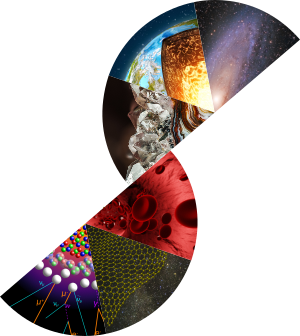One of the current limitations of Ni-based alloys is their sensitivity to hydrogen embrittlement (HE). To design new alloys with improved resistance to HE it is essential to determine key factors that tune their resistance, that couple microstructure, electronic structure and mechanical properties. Most of the phases formed in Nickel alloys leads to an increase in hydrogen embrittlement. However, γ' precipitates with high γ/ γ' lattice misfit and MC carbides have been evidenced to trap hydrogen in austenitic steels. To experimentally study this in nickel alloys, nickel alloys containing only γ' precipitates with tailored γ/ γ' lattice misfit or TiC carbides were designed using a combination of computational thermodynamics, genetic algorithm multi-objective optimization, and physical models. These alloys were designed such that the phases can be dissolved at high temperatures and precipitated by heat treatment. After designing, the alloys were fabricated in the laboratory. These alloys were studied with and without the presence of precipitates using electrochemical permeation and thermal desorption spectroscopy. Finally, the efficiency of the designed model alloys to control hydrogen trapping will be discuss in the context of experimental and numerical results.
Alternatively, It has previously been proposed that in transition group element alloys, the HE increases with the density of states at the Fermi level N(Ef). We show how the nature of the X solute (V, Mo, Co, Nb, Ti, W, Fe, Cr) acts on electronic-structure quantities that give qualitative trends towards the selection of solute candidates in Ni-X binary alloys. Then, we consider a nano inverse hydrogen-enhanced decohesion mechanism which takes into account the effect of hydrogen on crack tip phenomena. This mechanism proposes that for pure Ni embrittlement occurs in presence of H due to lowering of the stress intensity factor for cleavage (KIc) below the stress intensity factor for ductile dislocation emission and crack blunting (KIe). This approach is here extended to binary nickel alloys to investigate the influence of alloying elements on HE. First-principles calculations were performed to calculate KIe and KIc as a function of solute concentration. Further KIe and KIc are also calculated at varying H concentration for these alloys to further understand the effect of H. These calculations and experimental results are meant to provide quantitative inputs to the future design of optimal nickel alloys that are the most resistant to hydrogen embrittlement.
|
Design and characterisation of model nickel alloys resistant to hydrogen embrittlement
1 : Nantes Université, Institut des Matériaux de Nantes – Jean Rouxel (IMN), CNRS UMR 6502, 2 rue de la Houssinière, BP 32229, 44322 Nantes Cedex 3
Nantes Université, Institut des Matériaux de Nantes – Jean Rouxel (IMN), CNRS UMR 6502, 2 rue de la Houssinière, BP 32229, 44322 Nantes Cedex 3
2 : Mines Saint-Etienne, Univ Lyon, CNRS, UMR 5307 LGF, Centre SMS, F - 42023 Saint-Etienne France
Mines Saint-Etienne, Univ Lyon, CNRS, UMR 5307 LGF, Centre SMS, F - 42023 Saint-Etienne France
|

 PDF version
PDF version
